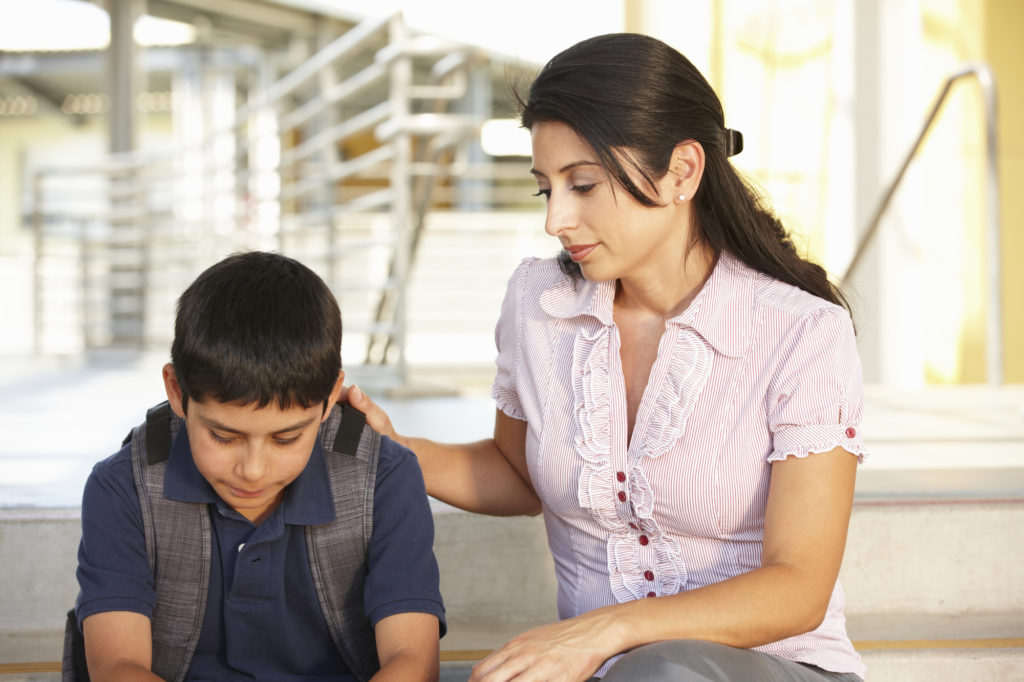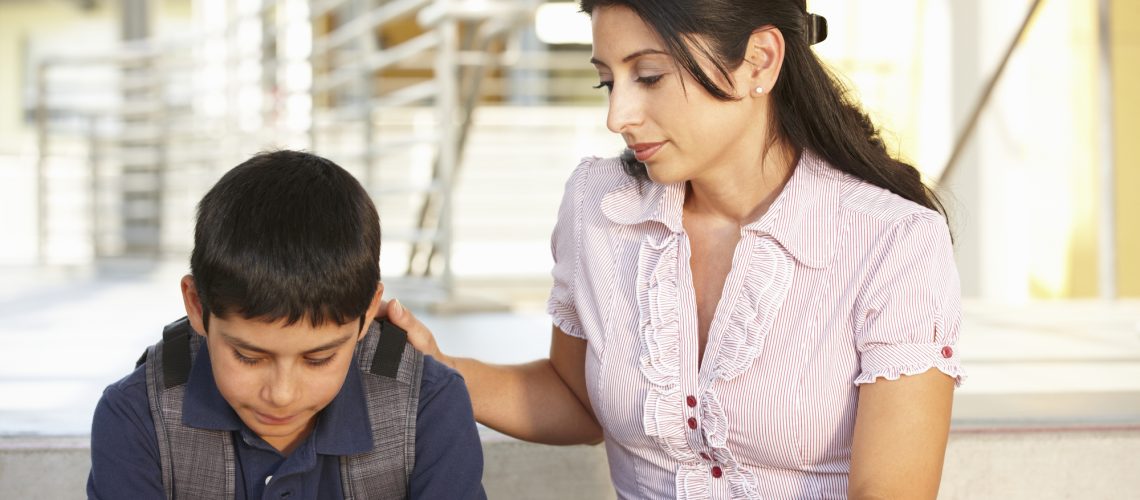
Let me be crystal clear; I am not defending mass shooters and I am not blaming schools or teachers for tragedies.
As a helper and healer of aching hearts, I am struggling with the inability to effectuate change in the face of ongoing traumas and tragedies. My colleagues are sending out letters and posting messages to help people process the latest catastrophes. We barely had time to process the recent racially motivated massacre in Buffalo, NY when the Texas tragedy occurred. I too sent out an email to my list – frankly, I couldn’t think of what to say that was different or new, so I simply forwarded links from professionals in the mental health and media fields, on how to talk to your kids and how to take care of yourself. One of the most important strategies I teach parents and educators is how to anticipate a challenging child’s needs and behaviors. The ability to do so, requires knowing the child and developing rapport and trust. It is often with challenging children that we avoid exactly this connection. Whether it’s because their story is sad, we don’t feel we can do anything about it, we just want them to conform, or we don’t think we can make a difference, the fact remains that a personal connection with a child allows adults to intervene before tragedy strikes.
This morning as I drove home from dropping my own child at school, I listened to the news as experts talked about all the ‘usual’ responses to gun tragedies. They spoke of limiting guns versus arming teachers. They talked of ways to make schools safer with increased security and armed guards. They encouraged self-help, breathing and mindfulness, talking to your kids not too much but not too little. These are concepts and suggestions we’ve been debating for decades. Then one brave expert brought up the “soft” ways to make schools safe. He talked of helping students feel connected and accepted. He talked of anti-bullying and taking time to really know students. I’m embarrassed to say, I hadn’t gone through the thought process of the shooter’s perspective. I was stuck on how do we in the United States question the ability of an eighteen-year-old to drink responsibly but trust that they can shoot responsibly? I just decided the shooter was the devil.
Data tells us that just this year there were twenty-seven school shootings in the U.S. resulting in injury or death. What we also know is that often it’s children who are shooting children. In a recent essay in “Scientific American,” we learn that
The choice of “gunmen” to describe the perpetrators is accurate – all of the mass school shootings in our database were carried out by men or boys. And the average age of those involved in carrying out the attacks was 18.
The essay intimates that shooters’ own educational experience may influence their behavior, sharing that
… most school shooters have a connection to the school they target. Twelve of the 14 school shooters in our database prior to the most recent attack in Texas were either current or former students of the school.
We also know that most shooters intend for the incident to be their final act; an outcry of anger preceded by social media posts or videos warning or boasting their intentions. The “Scientific American” essay concludes that the shooter’s
… path to violence involves self-hate and despair turned outward at the world, and our research finds they often communicate their intent to do harm in advance as a final, desperate cry for help. The key to stopping these tragedies is for society to be alert to these warning signs and act on them immediately.
For sure taking threats seriously is imperative. However, there is a critical step that must take place well before getting to this dangerous point. Rather than relying on warning signs, I’d rather prevent a child from intense alienation and disaffection. Often we see twice exceptional children going down this road of loneliness, negative self-concept and since few people understand or listen, they act out rather than communicate their needs. When I train teachers to work with twice exceptional students, I love to say, “Find the hardest kid to love and love him the hardest.” Just spending one on one time learning about a child’s likes and dislikes allows him to feel connected and as though he matters. We usually know when a child has had difficulty in prior years or comes from a hard home. Rather than wait for him to veer off the path, to hand out consequences for unwanted behavior, creating a connection just might prevent that difficult behavior and attempt for attention, in the first place.
I know nothing about this kid who murdered and wounded innocent children and teachers. I have no idea what his motive was, or anything about the family of this child who induced trauma on thousands and probably millions of people around the globe. I’ve searched for a way to move forward as a doer – someone who needs to create change. What I’ve come up with is sharing my typical message to parents and teachers of 2e kids to parents and teachers of all kids, with the hope that changing adult behavior can possibly change the fragile self-concept of children. I believe that a strong self-concept is developed through our interactions with others. Self-confidence is imperative for making good choices and having the ability to advocate for one’s needs. Advocating for one’s needs as a child certainly requires trust and feeling safe.
For all parents and teachers, here are suggestions to try and create connection, grow trust, and let a challenging child know that you are a safe place for them to be their authentic selves and take risks.
- If the intervention you’ve tried more than once with your child or student doesn’t work, stop trying it. It only serves to shame the child and it likely is not teaching him anything except that he is not meeting your expectations.
- Notice when all children, but especially ‘difficult’ children do well. Make a big deal of what may seem like a little deal to you. Particularly for 2e children, ‘easy’ things are often hard. If they finally meet an expectation that others their age met weeks ago, notice it, and call it out as though they just climbed Mount Everest – because likely they did surmount their own summit. Since difficult kids are redirected and admonished multiple times more than their peers, spending time noticing their efforts goes a long way to build resilience and strengthen confidence.
- Remember Ross Greene’s words; “Kids would do well if they could.” Stop assuming the worst and start giving the benefit of the doubt. Challenging behavior is communication – find out what the child is trying to convey before their behavior becomes so difficult, or dangerous, that you have no option but to react.
- Validate a child’s feelings. Even if you perceive their response as immature or inaccurate – those are their feelings. The extra time you take now to acknowledge their experience, even if it derails your plans, will give you more engaged, connected ,and motivated learners later.
- The most important thing to learn in school is how to feel good enough about yourself to successfully be with others. Bring kids together to help them navigate challenging social situations. Teach kids to collaborate to solve problems.
I have no words and absolutely no solution to the horrific epidemic of mass shootings we experience in the United States. I recognize that teachers are losing their planning time to sub for teacher vacancies and feel like the demands are non-stop. Teachers want someone to find money in the budget to hire more counselors and mental health professionals. They want smaller class sizes. There is so much work to be done and there is never just one person, system or reason for tragic school shootings. I do, however, believe that there are two very important things we must do; learn how we can respond when signs are there, but more importantly act to derail the disaffectedness, loneliness and negative self-concept that scourges young students who for some reason or another, do not fit in and can’t comply with typical expectations.
Let me be crystal clear; I am not defending mass shooters and I am not blaming schools or teachers for tragedies. As a helper and healer of aching hearts, I […]

Author: Julie Skolnick
Julie Skolnick, M.A., J.D., is the Founder of With Understanding Comes Calm, LLC, through which she passionately guides parents of gifted and distractible children, mentors 2e adults, and collaborates with and advises educators and professionals on bringing out the best and raising self-esteem in their students and clients.


2 Responses
As a mom of a twice exceptional child and a SPED teacher, I appreciate your expertise and helpful information.
Thank you Sally! If you haven’t already, please feel free to join our Facebook groups for your interests. We have one for parents; https://www.facebook.com/groups/letstalk2eparents, one for Teachers: https://www.facebook.com/groups/3876712172375460 and one for 2e Adults: https://www.facebook.com/groups/749765199034202 We all need communities where we feel camaraderie and understanding.